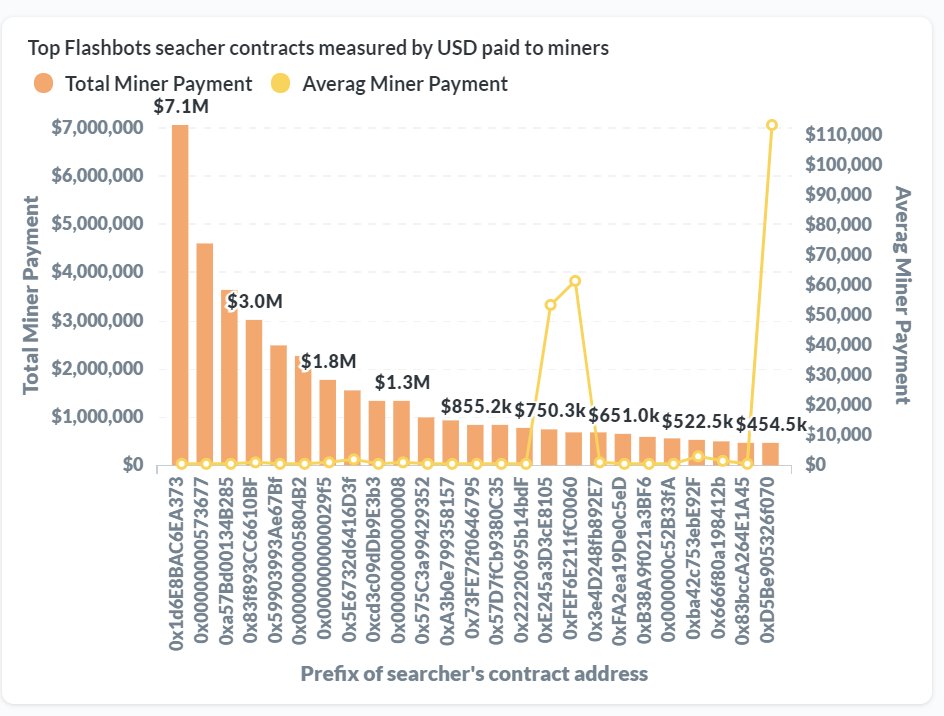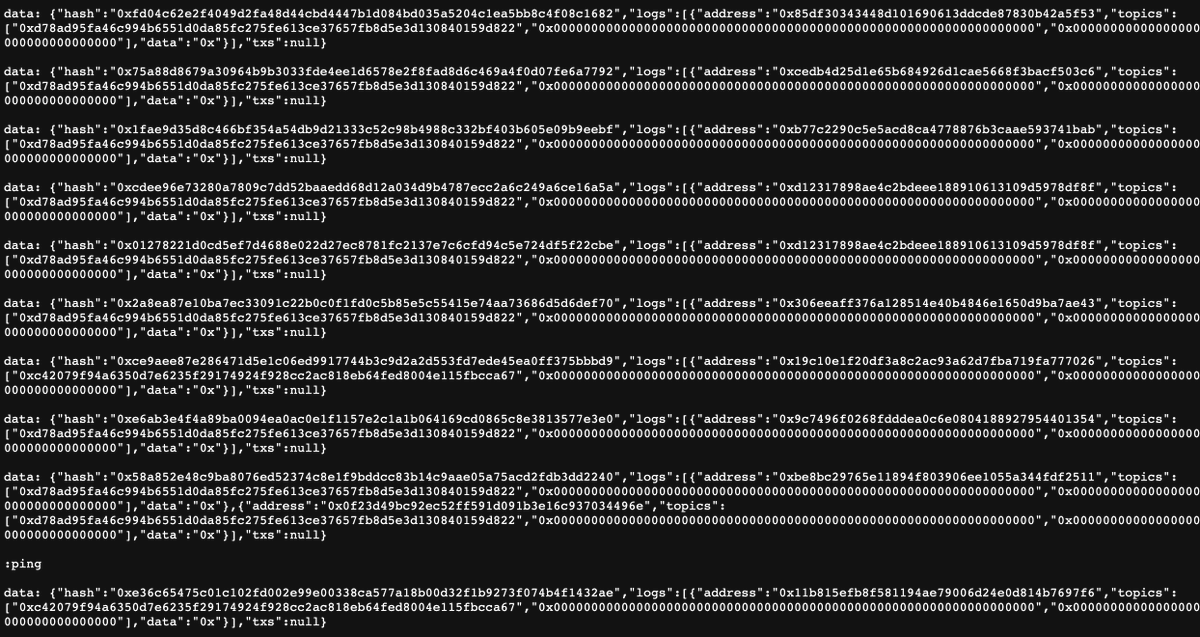Introducing the Flashbots Dashboard, a collection of real time metrics to give the community transparency on the Flashbots Network:
dashboard.flashbots.net
Thread 👇🏻
dashboard.flashbots.net
Thread 👇🏻

In January Flashbots released Flashbots Alpha v0.1, a proof of concept communication channel between miners and users that enables transparent and efficient MEV extraction.
Since then we've seen rapid adoption, and now over 30% of blocks on Ethereum are Flashblocks.
Since then we've seen rapid adoption, and now over 30% of blocks on Ethereum are Flashblocks.

Flashbots has two types of direct users today: searchers & miners
Searchers are users who send transactions via Flashbots - today these are mostly bot operators extracting MEV
Miners are the block producers of Ethereum today, who want to extract MEV in a fair & transparent way
Searchers are users who send transactions via Flashbots - today these are mostly bot operators extracting MEV
Miners are the block producers of Ethereum today, who want to extract MEV in a fair & transparent way
Miners who run MEV-Geth and receive Flashbots bundles make extra ETH for doing so.
In fact miners make about ~5% more revenue for each Flashbots blocks they mine, and in total miners have made ~$45m in profit from Flashbots.
In fact miners make about ~5% more revenue for each Flashbots blocks they mine, and in total miners have made ~$45m in profit from Flashbots.

Measured in ETH or USD daily miner profit has been going up over time, and yesterday was Flashbots' most profitable day. About ~800 ETH or ~$3m in miner profit.
Mining Flashbots blocks is profitable because searchers' transactions pay more than the transactions they displace.

Mining Flashbots blocks is profitable because searchers' transactions pay more than the transactions they displace.


The 🟪 line is the gas price of searchers' transactions & the 🟦 line is the gas price of txs at the tail end of blocks
The "tail gas price" txs are the least profitable for miners & are pushed out to make room for searchers' txs. Since 🟪 > 🟦 this is profitable to do!
The "tail gas price" txs are the least profitable for miners & are pushed out to make room for searchers' txs. Since 🟪 > 🟦 this is profitable to do!

We've seen strong adoption by searchers because Flashbots is great for them too. Searchers only pay for txs if they are successful & can send groups of txs bundled together to be executed atomically
These are super powers that open up many new MEV opportunities
These are super powers that open up many new MEV opportunities

Quantifying the # of searchers is hard because a searcher can use multiple signing keys in the relay, multiple EOAs, and multiple contracts on-chain. We're moving towards a reputation system based on signing keys, but for now we've listed three different searcher adoption metrics
Quantifying how much profit searchers have made is also hard (we're working on it), but we can easily see how much they've paid to miners
The top searcher contract has paid $7.1m to miners in total, and 11 searcher contracts have paid more than $1m.
The top searcher contract has paid $7.1m to miners in total, and 11 searcher contracts have paid more than $1m.

If you're interested in learning more about Flashbots and what we've been up to check out the latest Flashbots transparency report here:
medium.com/flashbots/flas…
medium.com/flashbots/flas…
Of course none of this would be possible without the tireless work of the inimitable Flashbots team
@phildaian @tzhen @epheph @ObadiaAlex @thegostep @jparyani @fiiiu_ @tkstanczak @EdgarArout @taarushv @LukeYoungblood @sui414
@phildaian @tzhen @epheph @ObadiaAlex @thegostep @jparyani @fiiiu_ @tkstanczak @EdgarArout @taarushv @LukeYoungblood @sui414
Lastly if you have any feedback or metric requests please post them here:
github.com/flashbots/pm/d…
github.com/flashbots/pm/d…
• • •
Missing some Tweet in this thread? You can try to
force a refresh











